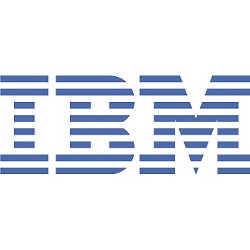Moreover, as part of the procurement initiative, the province is changing its procurement process, such that all potential bidders must use an “e-sourcing tool” to obtain tender offers and to make bids. The e-sourcing tool was developed by a US-based company called Emptoris, which was bought by IBM last year. As used in Nova Scotia, the e-sourcing tool is licensed to the international professional services company Deloitte, which operates in a decade-long “alliance” with IBM.
In practical terms, any company bidding on a tender offer from the province must first register through Deloitte to obtain the e-sourcing tool, then use the tool to submit the bid. The bid then sits not on the province’s computers, but on a server controlled by Deloitte. If bidders need assistance, they are directed to telephone the IBM-Emptoris customer support number.
Contingent IT labour
Last Thursday, notice of a request for proposals was placed on the province’s procurement website. That RFP is looking for a firm to manage the “contingent IT labour” used by the province. That is, the province is looking for a firm to coordinate the contracting out of approximately 153,000 hours in labour, costing over $15 million annually, for short-term IT projects.“We currently do business with over 700 IT consultants or consulting groups, for very specific things,” explains Gary Porter, the project lead for the strategic procurement initiative. “They’re typically in areas where there’s a short-term need—there would not be a case to have internal staff dedicated to it, because for the short-term nature. And secondly, it may involve an expertise that we currently do not have in government but require for a short period of time.”
Currently, each government department and agency contracts out for short-term IT labour as it needs it, and there’s no “big picture” coordination. Nobody is looking to combine projects or to achieve volume discounts, so there likely are large savings to be obtained through a systematic, province-wide coordination of such projects.
But why not simply do that coordination in-house instead of contracting it out?
“I don’t think that that’s necessarily the approach that we want to see,” answers Porter, “simply due to the other priorities that exist and the resources available and the expertise available to do this work.”
Planning for the strategic procurement initiative began in September, says Porter. Interestingly, this was precisely when the province was winding up negotiations with IBM for the outsourcing of the finance department’s SAP operations. (SAP is the computer program used for planning and managing financing.)
The broad terms of the deal with IBM are known: The province will outsource SAP operations to the company at a cost starting at $8.4 million the first year, and will give the company up to $12.4 million in payroll rebates. In total, the decade-long contract will cost the province at least $100 million, and likely much more. In return, IBM will establish a “global delivery centre” in Halifax, hiring a minimum of 100 people. In order to receive all the promised payroll rebates, IBM would have to hire up to 400 workers.
But the province has refused to make the contract with IBM part of the public record, so we don’t know what other clauses are in the contract. Perhaps there’s a condition that the company must locate the global delivery centre in the office tower above the convention centre now under construction. Or, maybe there’s an additional condition that says the province must contract out management of its contingent IT labour force.
“No,” answers Porter, when asked if the RFP for the strategic procurement initiative was written specifically with IBM in mind,. “Keep in mind that there are absolutely no companies we have in mind for this work. This is a fair, open and transparent process.”
But whether the RFP was crafted specifically for IBM or not, certainly the newly announced IBM global delivery centre in Halifax—which is arguably subsidized by the $100 million finance department outsourcing deal—gives the company a good chance to win the contingent IT labour management contract.
E-sourcing tool
Even more problematic than the contract for management of contingent IT labour is a second part of the strategic procurement initiative: a dramatic change in how the province goes about procurement.Up until very recently, the province simply posted all tender offers and requests for proposals on its procurement website. Anyone—an interested vendor, a curious citizen, a nosy newspaper reporter—could click on a link to open a PDF file that contained the full tender. Tender offers were public in the most public of ways, fully accessible to everyone, without a government gatekeeper managing the flow of information. Anyone and everyone could obtain the information immediately, without asking permission, without saying why they wanted it and without being tracked.
That has all changed.
Notice of tenders and requests for proposals are still posted on the procurement website, but clicking the link brings interested parties to a new page that says that in order to obtain the full tender offer or request for proposal, we must first receive the e-sourcing tool. And in order to do that, we must give identifying information to Deloitte, which will then deliver the e-sourcing tool electronically.
“We are working in partnership with Deloitte with this project,” explains Porter. “Deloitte has the licence for the e-sourcing tool that they brought to this project, and so really the Deloitte team has brought that tool for us to use as part of the process.
“What it does for us is help us manage the number of RFPs that we have out at one time,” continues Porter. “It helps us make any changes that may be necessary to one of the RFPs in real time, it allows the vendor community to gain access and bid electronically on the RFPs that we have issued and it allows us to more easily exchange communications and messages with the people who have shown and taken an interest in the RFP process—so our messages will be delivered consistently and timely. And it simply helps us manage this process in the most efficient way that we possibly can.”
Porter doesn’t seem to understand the objection that the e-sourcing tool is effectively a gatekeeper, an intermediary between citizens and public information. If nothing else, it causes significant delay. The Coast asked to obtain the e-sourcing tool in order to get the contingent IT labour management request for proposal on Friday. Four days later, we’re still waiting to receive it. Moreover, the process is cumbersome: a separate tool must be requested for each and every tender offer.
“Remember, the tool was designed for bidding on government work,” says Porter. “We have nothing to hide in relation to the RFPs that we’ve issued. They’re public documents. This process is meant to be an open, fair and transparent process...The purpose of the public tender notice board is to make the community aware of when we are purchasing goods and services. That’s the intent.”
We then have the following exchange with Porter:
Porter: We’re not aware of any businesses that have shown an interest in these RFPs that had any difficulty in acquiring access, and it may be that they’re accustomed to using tools like this.The Coast: I use the internet everyday, thanks. On what server does it sit?
Porter: I don’t know. That’s a level of detail...
The Coast: Is it sitting on Deloitte’s server or on the province’s server?
Porter: I really don’t know. The important piece for us is there’s a connection at the public tenders office, a link to the tool.
The Coast: Yea, here’s why I ask: the help number for the tool is for IBM...
Porter: The tool that Deloitte has licence on was developed by Emptoris and Emptoris was bought by IBM, so that’s why...
The Coast: See, this is why it matters where the e-bidding tool is sitting, on what server?
Porter: It’s sitting on the Deloitte server. I just had someone answering from the Deloitte team, and they say it’s sitting on the Deloitte server.
The Coast: Isn’t there a security concern here? You’re asking someone to manage this contingent labour force, a non-public organization. So they’ll be submitting bids, and I would suspect that IBM would be one of these companies, and it’s sitting on a server that IBM has access to—won’t they be able to know what all the bids are and be able to under-bid it?
Porter: No. No, there’s no connection to the, er, Deloitte is in partnership on this process with us, and there is not a conflict of interest there.
The Coast: So you’re saying Deloitte won’t bid on this?
Porter: No, Deloitte will not bid on this. That would be a conflict for them.
Porter admits that it would be a conflict for Deloitte to bid on the contract for management of contingent IT labour, so why wouldn’t it also be a conflict for IBM to bid on it?
After all, Deloitte proudly announces on its website that it is in “alliance” with IBM. “Deloitte and IBM have teamed to create joint offerings focused on the needs of federal, state and local government organizations,” explains the website. “These offerings leverage the IBM software portfolio to help public sector clients in their efforts to develop efficient, cost-effective solutions to their financial, performance and information management needs.”
Two companies, IBM and Deloitte, are now not only the gatekeepers for the procurement process, but also serve as the repository for all bids offered for every provincial tender in Nova Scotia. This should profoundly concern the public.

















